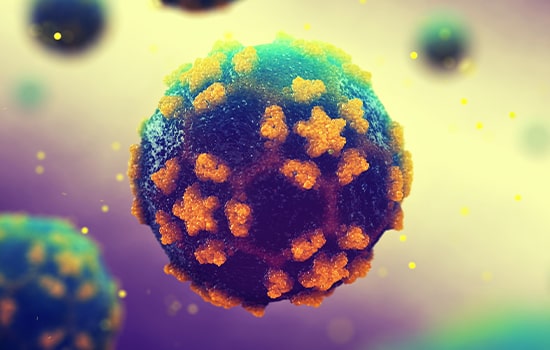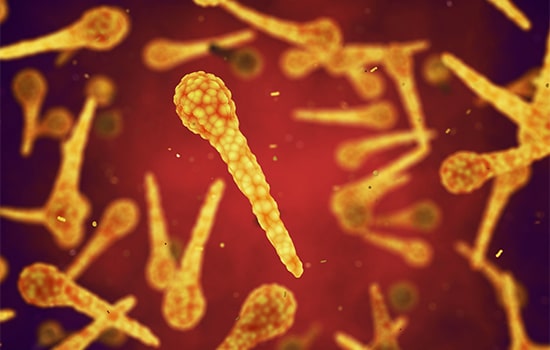Applications
Understanding of Types of Vaccines for Immune System
Vaccine for immune system
Vaccines are products designed to trigger protective immune responses and prepare the immune system to fight future infections from disease-causing agents. Vaccines stimulate the immune system's production of antibodies that identify and destroy disease-causing organisms that enter the body. Vaccines for animals/ veterinary and vaccines for humans provide immunity against one or several diseases that can lessen the severity or prevent certain diseases altogether.
Types of Vaccines
Vaccines are made using several processes. They may contain live viruses that have been attenuated (weakened or altered to not cause illness); inactivated or killed organisms or viruses; inactivated toxins (for bacterial diseases where toxins generated by the bacteria, and not the bacteria themselves, cause illness); or merely segments of the pathogen (this includes both subunit and conjugate vaccines).
These are the Types of Vaccines; Live-Attenuated Vaccines, Inactivated Vaccines, Subunit, Recombinant, Polysaccharide, Conjugate Vaccines, and Toxoid Vaccines
Live-Attenuated Vaccines
Live-attenuated vaccines inject a live version of the germ or virus that causes a disease into the body. Although the germ is a live specimen, it is a weakened version that does not cause any symptoms of infection as it is unable to reproduce once it is in the body. Its modified “wild” type or disease-producing virus or bacterium that are weakened or attenuated in a laboratory, usually by repeated culturing. The “weakened” strain retains the ability to replicate (grow) and produce immunity which does not usually cause a disease. There are two characteristics of this type of vaccine, fragile and fast.
- Fragile – handling and storage must be considered and
- Fast – usually produces immunity to recipients with one dose
One concern that must be considered is the potential for the vaccine virus to revert to a form capable of causing disease. Mutations that can occur when the vaccine virus replicates in the body may lead to a more virulent strain. This is unlikely, as the vaccine virus’s ability to replicate is limited. However, possible mutations are considered when developing an attenuated vaccine. It is worth noting that mutations are somewhat common with the oral polio vaccine (OPV), a live vaccine that is ingested instead of injected. The vaccine virus can mutate into a virulent form and lead to rare cases of paralytic polio. For this reason, OPV is no longer used in the United States, and has been replaced on the Recommended Childhood Immunization Schedule by the inactivated polio vaccine (IPV).
Protection from a live, attenuated vaccine typically outlasts the protection provided by a killed or inactivated vaccine. We can find examples of Live-Attenuated Vaccines such as yellow fever, measles, rubella, mumps, chickenpox, and influenza.

Inactivated Vaccines
Microorganisms or viruses are inactivated through heat, chemicals, radiation, or antibiotics. Inactivated vaccines are the earliest type of vaccine to be produced, and they do not trigger an immune response that is as strong as that triggered by live-attenuated vaccines. Although the pathogen’s ability to replicate is destroyed, the process of inactivation keeps the virus intact for the immune system to recognize it. Inactive Vaccines are multiple and humoral which means:
- Multiple – shorter lengths in providing protection than live-attenuated vaccines and require multiple doses to create long-term immunity
- Humoral – immunity generated by circulating antibodies as the first dose of vaccine “primes” the immune system
Subunit, Recombinant, Polysaccharide, Conjugate Vaccines
Specific antigenic parts of the pathogen, whether its protein (subunit), sugar (polysaccharide), gene segment (recombinant), or capsid are used to create the vaccine. Although the immune responses are strong, these types of vaccines may need topping up over time. They are suitable for people with weakened immune systems and long-term health conditions.
- Subunit – isolated protein of interest from a pathogen to provoke a response from the immune system
- Recombinant – gene code from a specific pathogen is inserted to another virus or into producer cells (commonly mammalian cell lines) in culture to produce the vaccine protein
- Polysaccharide – an inactivated subunit vaccine composed of long chains of sugar molecules that are able to stimulate B cells without T-helper cell assistance
- Conjugate – uses a part of a bacteria combined with a carrier protein to generate a strong immune response
Some examples of these vaccines are hepatitis B, influenza, human papillomavirus, anthrax, acellular pertussis

Toxoid Vaccines
Some bacterial diseases are not directly caused by a bacterium, but by a toxin produced by the bacterium. One example is tetanus: the Clostridium tetani bacterium does not cause its symptoms, a neurotoxin it produces (tetanospasmin) does. Immunizations for this type of pathogen can be made by inactivating the toxin that causes disease symptoms. As with organisms or viruses used in killed or inactivated vaccines, this can be done via treatment with a chemical, such as formalin, or by using heat or other methods.
Immunizations created using inactivated toxins are called toxoids. Toxin produced by a pathogen is used to make the vaccine. It creates immunity targeted to the toxin rather than the whole pathogen. Toxoid vaccines do not offer lifelong immunity and need to be topped up over time.
- Toxoid – inactivated toxins
- Toxoid Vaccines can be found in diphtheria, and tetanus.
Vaccine research and development process
Most vaccines have been in use for decades, with millions of people receiving them safely every year. As with all medicines, every vaccine must go through extensive and rigorous testing to ensure it is safe before it can be introduced in a country’s vaccine programme.
Vaccine manufacture is one of the most challenging industries. Even the most basic manufacturing steps necessary to produce vaccines in a manner that is safe, effective, and consistent over the life cycle of a vaccine are difficult to execute. Outcomes can vary widely due to the nearly infinite combinations of biological variability in basic starting materials, the microorganism itself, the environmental condition of the microbial culture, the knowledge and experience of the manufacturing technician, and the steps involved in the purification processes. To add to the complexity, the methods used to analyze the biological processes and antigens resulting from vaccine production often have high inherent variability. Failure to manage these risks can result in costly product recalls, and suspensions and penalties may be assessed if a manufacturer fails to fulfill supply agreements. In addition, lack of supply can disrupt routine immunization programs and negatively impact national public health outcomes.
Each vaccine under development must first undergo screenings and evaluations to determine which antigen should be used to invoke an immune response. This preclinical phase is done without testing on humans. An experimental vaccine is first tested in animals to evaluate its safety and potential to prevent disease.
Esco VacciXcell can provide turnkey solutions for the production of vaccines with cell culture based industry, beginning from research and development of vaccine candidates, all the way to the production scale.
Sources
- Antia, R. et al. Recombinant vector vaccine evolution. (2019). https://journals.plos.org/ploscompbiol/article?id=10.1371%2Fjournal.pcbi.1006857
- CDC. (2012). https://www.cdc.gov/
- CDC. (2018). https://www.cdc.gov/vaccines/hcp/conversations/understanding-vacc-work.html
- History of Vaccines. (2018). https://www.historyofvaccines.org/content/articles/different-types-vaccines
- The Immunization Advisory Centre. (2020). https://www.immune.org.nz/





